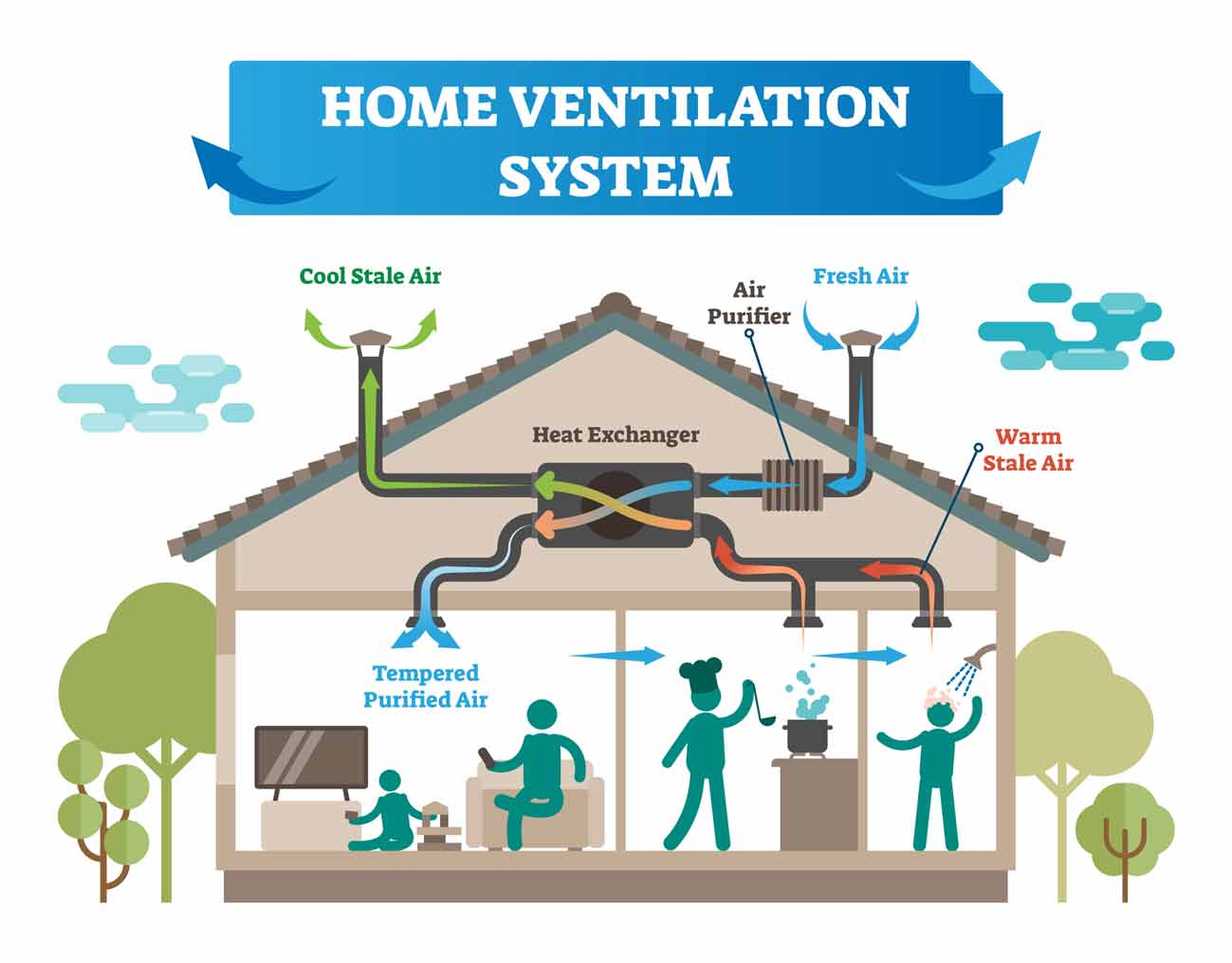The Role of HRV in Green Homes
How Heat Recovery Ventilation Enhances Indoor Air Quality and Reduces Power Expenses
Heat Recovery Ventilation (HRV) systems play a crucial function in improving indoor air top quality while at the same time lowering power expenses. By successfully exchanging stagnant indoor air with fresh outside air, HRVs help preserve optimal moisture and decrease pollutants. Furthermore, their capacity to recover heat from outbound air minimizes the stress on home heating and cooling systems. As power expenses remain to rise, comprehending the complete potential of HRV systems ends up being significantly essential for homeowners and businesses alike.
Comprehending Heat Recovery Ventilation Equipments

Heat recovery ventilation (HRV) systems play a vital duty in enhancing interior air top quality, particularly in contemporary, energy-efficient structures. These systems are made to transfer heat from the outbound stagnant air to the inbound fresh air, consequently decreasing energy loss while keeping perfect temperature level degrees inside. HRVs consist of a heat exchanger, fans, and ductwork, assisting in the continual circulation of air. By removing indoor contaminants and introducing fresh air, HRVs aid to balance humidity levels, prevent mold growth, and decrease allergens. The effectiveness of HRV systems depends on their capability to recuperate as much as 80% of the warm from the tired air, promoting energy conservation while guaranteeing a healthy indoor environment. Their integration is vital in achieving lasting living techniques.
The Significance of Indoor Air Top Quality
Indoor air quality (IAQ) is an essential element affecting the wellness and well-being of owners in any kind of environment. Poor IAQ can result in various health concerns, including breathing troubles, allergic reactions, and fatigue. Furthermore, it can worsen present problems such as bronchial asthma. Variables adding to reduced IAQ include toxins from interior resources like cleansing representatives, mold, and insufficient ventilation. Consequently, preserving good IAQ is vital for advertising a secure and comfy living or working area. Efficient approaches to enhance IAQ entail regular monitoring of air high quality, appropriate air flow systems, and minimizing using dangerous compounds inside. By focusing on IAQ, individuals can assure a healthier environment that cultivates productivity and total high quality of life.
Power Effectiveness Benefits of HRV Equipments
Several home owners and structure managers are significantly recognizing the power performance benefits of heat healing ventilation (HRV) systems. By moving warm from tired interior air to inbound fresh air, HRV systems considerably decrease the energy needed for heating and cooling. This procedure decreases dependence on traditional heating and cooling systems, resulting in reduced power costs. Additionally, HRVs aid preserve a balanced indoor environment, protecting against excessive home heating or cooling down needs. The ability to recoup as much as 90% of the warm from outbound air also supports sustainability initiatives by lowering general energy consumption. HRV systems contribute not only to set you back financial savings but also to a lowered carbon impact, aligning with the expanding focus on energy-efficient building techniques.
Setup and Maintenance Considerations
The reliable execution of warm recovery air flow (HRV) systems requires mindful consideration of installation and upkeep elements to assure peak efficiency. Proper positioning discover this info here of the HRV device is vital, as it should be mounted in a location that takes full advantage of airflow while lessening noise interruption. Furthermore, ductwork should be suitably sized and protected to prevent power loss. Regular maintenance, consisting of filter replacement and system cleansing, is crucial to safeguard optimal performance and interior air quality. Proprietors need to develop a normal maintenance schedule to identify and address potential concerns prior to they escalate. Collaboration with skilled professionals throughout both setup and maintenance stages can boost the long life and efficiency of HRV systems, ultimately causing far better indoor settings and decreased energy costs.
Real-World Applications and Success Stories
Discovering real-world applications of heat healing air flow (HRV) systems reveals their significant effect on interior air high quality and power performance across numerous settings. In household buildings, house owners have actually reported improved air top quality, causing less allergic reactions and respiratory system issues. Schools implementing HRV systems have kept in mind enhanced trainee concentration and reduced absenteeism as a result of much better ventilation. Commercial structures, such as offices and retail spaces, have experienced reduced power costs and raised worker performance. For example, a company workplace in a temperate climate achieved a 30% reduction in power costs after installing an HRV system. These success tales show that HRV modern technology not just i was reading this adds to healthier environments but additionally provides tangible economic benefits, making it an important investment for different fields.
Regularly Asked Inquiries
Can HRV Systems Reduce Allergens in Indoor Air?
The performance of HRV systems in lowering interior irritants mainly rests on their ability to filter and exchange air. HRV Heat Recovery Ventilation. By continuously replacing stagnant air, these systems can greatly reduce irritant degrees throughout indoor settings

Exactly How Does Humidity Affect HRV System Efficiency?
Humidity considerably affects HRV system efficiency; high degrees can result in condensation, decreasing efficiency, while reduced humidity might enhance air exchange. Balancing humidity is important for suitable procedure and keeping interior air quality.
Are HRV Systems Noisy During Operation?
HRV systems can produce varying noise levels during operation, depending on their design and installation. Some units operate silently, while others may produce noticeable sound, specifically at greater air movement settings or when inadequately preserved.
What Is the Ordinary Life Expectancy of an HRV System?

Can HRV Solutions Be Used in All Environments?
HRV Recommended Site systems can be utilized in numerous climates, yet their efficiency may differ - HRV Heat Recovery Ventilation. In extreme temperature levels, adjustments or supplementary systems could be essential to ensure ideal efficiency and comfort while preserving interior air quality